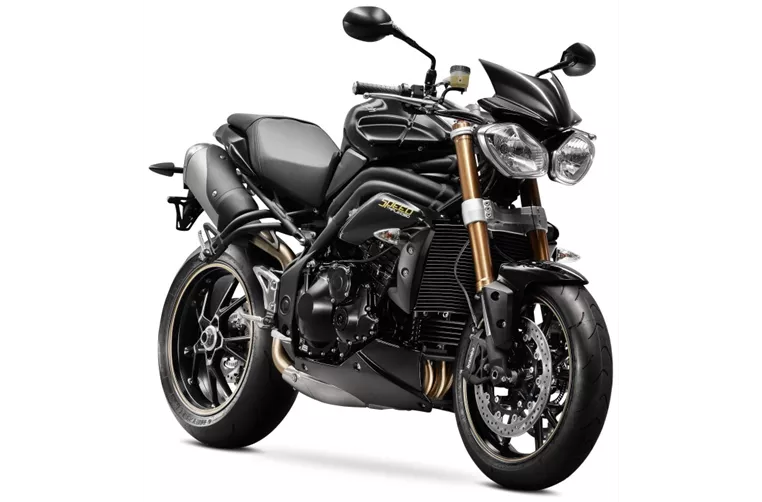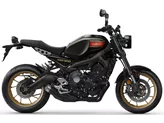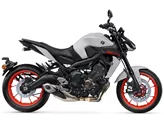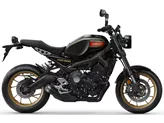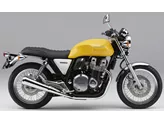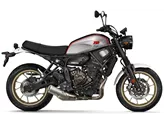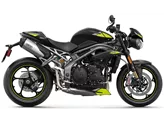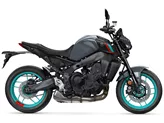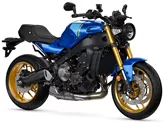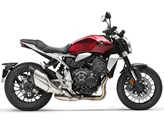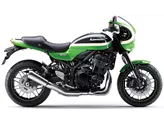Triumph Speed Triple 1050 2013 vs. Yamaha XSR900 2016

Triumph Speed Triple 1050 2013

Yamaha XSR900 2016
Vue d’ensemble - Triumph Speed Triple 1050 2013 vs Yamaha XSR900 2016
The Triumph Speed Triple 1050 2013 and the Yamaha XSR900 2016 are both naked bikes with similar engine types, cooling systems, and frame types. However, there are notable differences between the two models.
In terms of engine power, the Speed Triple 1050 takes the lead with 135 HP compared to the XSR900's 115 HP. This gives the Triumph an advantage in terms of acceleration and top speed. Additionally, the Speed Triple produces more torque at 111 Nm compared to the XSR900's 87.5 Nm, providing better low-end power and overall performance.
Both bikes have three cylinders, which contribute to their unique sound and smoothness. However, the Speed Triple's engine displacement is larger at 1050 ccm, compared to the XSR900's 847 ccm. This larger displacement may result in a more robust and powerful engine performance.
In terms of suspension, both bikes feature upside-down telescopic forks at the front. However, the Speed Triple's Showa suspension elements have been criticized for being slightly uncomfortable, while the XSR900's suspension is well-tuned and provides a comfortable ride.

Triumph Speed Triple 1050 2013
Both bikes have aluminum frames, which offer stability and durability. The Speed Triple has a twin-tube frame, while the XSR900 also features a twin-tube frame design. These frames contribute to the bikes' stability and handling.
In terms of dimensions and weights, the XSR900 has a slightly longer wheelbase at 1440 mm compared to the Speed Triple's 1435 mm. The XSR900 also has a lower seat height at 815 mm compared to the Speed Triple's 825 mm. However, the Speed Triple has a larger fuel tank capacity at 17.5 liters, compared to the XSR900's 14 liters.
When it comes to tire sizes, both bikes have a front tire width of 120 mm and a front tire diameter of 17 inches. However, the Speed Triple has a wider rear tire at 190 mm, while the XSR900 has a slightly narrower rear tire at 180 mm.

Yamaha XSR900 2016
In terms of weight, the XSR900 is lighter at 188 kg compared to the Speed Triple's 214 kg. This lighter weight may contribute to the XSR900's agility and maneuverability.
In terms of strengths, the Speed Triple boasts a powerful three-cylinder engine, providing a sporty driving feel. Its upright seating position and stable frame contribute to a comfortable and confident riding experience. On the other hand, the XSR900 is praised for its greedy engine, well-tuned riding modes, and standard ABS and TC. Its authentic modern design and clean workmanship also add to its appeal.
In terms of weaknesses, the Speed Triple's Showa suspension elements have been criticized for being slightly uncomfortable. Additionally, some riders find the Speed Triple's handling to be stubborn. The XSR900, on the other hand, has a hard chassis and a seat that could be more comfortable. Some riders also feel that the speedblock design of the XSR900 is already present on many other models, which may reduce its uniqueness.
Overall, both the Triumph Speed Triple 1050 2013 and the Yamaha XSR900 2016 have their strengths and weaknesses. The Speed Triple offers a more powerful engine and stable frame, while the XSR900 provides a well-tuned riding experience and modern design. Ultimately, the choice between the two will depend on the rider's preferences and priorities.
Caractéristiques techniques Triumph Speed Triple 1050 2013 par rapport à Yamaha XSR900 2016
Avantages et inconvénients en comparaison
Avantages et inconvénients en comparaison
Triumph Speed Triple 1050 2013
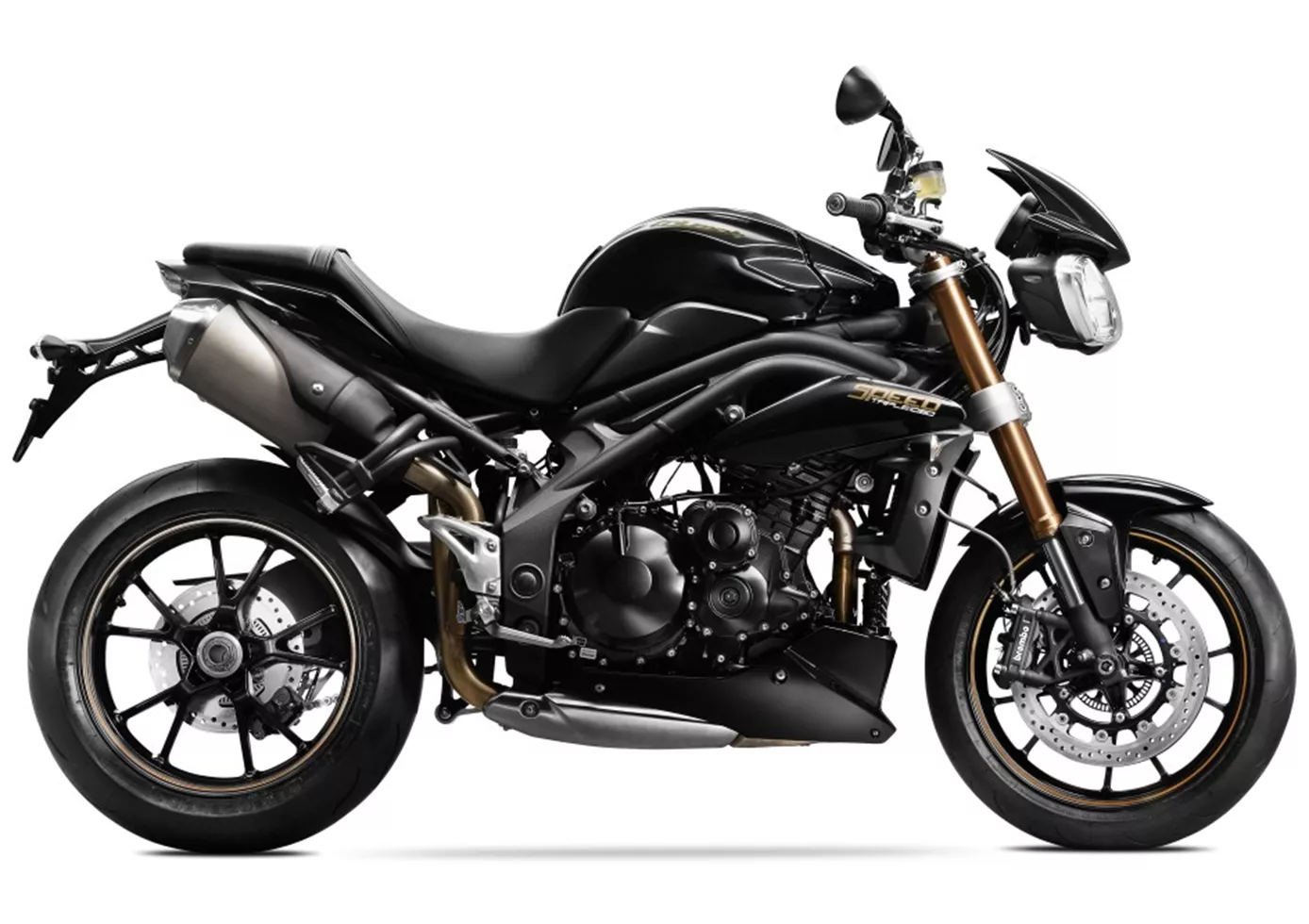
Plus de puissance, plus de kilos, plus de caoutchouc . Certes, elle n'est pas la plus souple, ce qui rend l'ascension des montagnes tyroliennes par des centaines de virages en épingle à cheveux parfois fatigante. Mais elle est plus mûre que la Street Triple, elle sait aussi glisser avec souplesse et sans agacement le long de la vallée et, pour une raison ou une autre, elle se sent plus confiante et plus sûre.
Yamaha XSR900 2016

La XSR900 allie les performances d'un streetfighter sportif à l'esthétique d'un naked bike rétro aux finitions soignées. Pour ce faire, les Japonais se servent de leur propre histoire, qui se trouve concentrée et sans faille dans les archives de l'agence de design travaillant depuis 60 ans pour Yamaha. Elle reprend les vertus de la MT-09 et a corrigé quelques-unes de ses faiblesses. Elle se conduit de manière plus harmonieuse, plus contrôlée et, si on le souhaite, plus détendue. Seul le confort, et donc le pilote, souffre de la fermeté du châssis sur les mauvaises routes. Il faut être capable de souffrir un tout petit peu avec un néo-classique.
Comparaison des prix Prix moyen du marché Triumph Speed Triple 1050 vs Yamaha XSR900
There are a few key differences between a Triumph Speed Triple 1050 2013 and a Yamaha XSR900 2016. In terms of price, the actual average price of a Triumph Speed Triple 1050 2013 is about 17% higher. There are the same number of bikes of both models available on the 1000PS.de marketplace, specifically 5. It takes less time to sell a Triumph Speed Triple 1050 with 66 days compared to 77 days for a Yamaha XSR900. Since model year 2005 1000PS.de editors have written 29 reviews for the Triumph Speed Triple 1050 and 30 reviews for the Yamaha XSR900 since model year 2016. The first review for the Triumph Speed Triple 1050 was published on 10/2/2007 and now has more than 16,200 views. This compares to more than 17,600 views for the first review on Yamaha XSR900 published on 11/25/2015.
